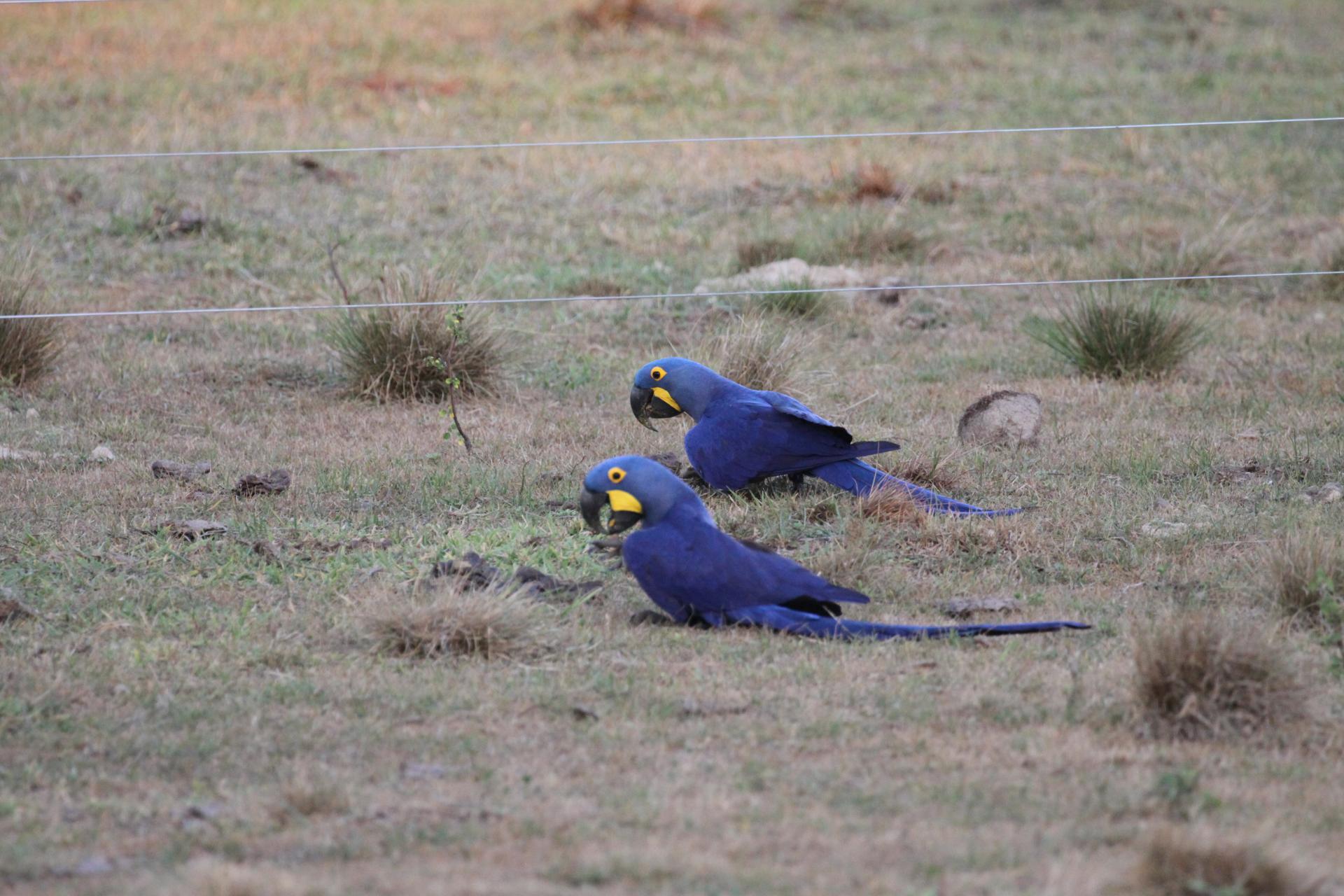Adopt a Hyacinth Macaw

The unique natural paradise Pantanal
The Pantanal is one of the largest inland wetlands in the world and covers an area of approximately 88,803 square miles (230,000 square kilometers). Most of it is located in the Brazilian states of Mato Grosso and Mato Grosso do Sul, but the Pantanal extends as far as Bolivia and Paraguay.
The Pantanal is considered one of the largest ecological reserves on earth. Three ecosystems can be found in its vast territory. Dry forests in the south, also called Chaco, savannah (Portuguese Cerrado) in the east and the Amazon jungle in the north. Depending on the climate and weather conditions, the landscape consists of swamps, seasonally flooded grasslands and forests and different types of forest. The Pantanal is also home to an extraordinary variety of flora and fauna. This includes over 1,700 plant species, around 120 mammal species, about 100 reptile species and 60 amphibian species, about 240 fish species and more than 650 bird species. In comparison, there are about 500 different species of birds throughout Europe. The Pantanal is also home to the world's largest population of blue hyacinth macaws.
The Arara Azul Institute for the Protection of the Hyacinth Macaws in the Pantanal
The Arara Azul Institute, a non-governmental organization founded in 2003 and based in Campo Grande, takes care of the hyacinth macaws and their breeding and researches the behavior and optimal environmental conditions of the animals in the Pantanal. The mission of the Institute is the conservation of biodiversity, with the aim of using natural resources and improving the quality of life.
In doing so, the Institute pursues two main goals:
1. to maintain the viable population of Hyacinth Macaws for a medium and long term free life in their natural habitat
2. the promotion of biodiversity and the conservation of the Pantanal habitat
Each year the institute sets itself individual tasks to achieve its goals. These include, for example, setting up new incubators and photo traps, sighting and counting hyacinth macaws, marking the babies and monitoring the population of hyacinth macaws, environmental education and adventure tourism.
The project "Adote um Ninho"
One of the most important actions is the campaign "Adote um Ninho" ("Adopt a chick"), which is supported by donations from individuals and companies. The project accompanies the Hyacinth Macaws throughout the entire reproductive period.
Last year, the first egg was laid on June 21st in Poconé, Mato Grosso. The end of the 2019/20 breeding season was in March 2020, when the last young animals left their nests in Miranda and Rio Brilhante.
During the breeding season, the team from the Arara Azul Institute regularly checked 243 incubators located in a large area in the states of Mato Grosso and Mato Grosso do Sul. They found out that 51 percent of the incubators were occupied by Hyacinth Macaws and 41 percent by other bird species such as turquoise-fronted amazon, giant toucans, or collared forest falcon.
The last reproductive season was clearly different from the others. At the beginning of the breeding season, there was a long-lasting drought. The climate was very unfavorable, because the rainfalls, which are an important trigger for the beginning of the egg-laying, started late. The region suffered from low humidity, high temperatures, strong winds, and extremely dry meadows. Only two Hyacinth Macaw pairs had laid eggs in June: one in Poconé and another at Caiman Lodge. The remaining pairs did not start until August. The Institute staff suffered another setback in September when one of the largest fires in the region occurred. A struggle lasting weeks was necessary to extinguish the fire and prevent greater damage.
At the end of the reproductive season, the result nevertheless surprised the employees of the institute. Of the 163 laid eggs, 41 young Hyacinth Macaws survived. Despite all the problems that arose during this reproductive season, the Hyacinthine Macaws showed a lot of resilience.
Adventure tourism
The increased interest of Brazilian tourists, who curiously observed the scientists during the field research, led to the Institute's approach of involving visitors in the research and protection measures. Since the year 2000, this approach has been expanded and now visitors have the opportunity to accompany the research work. For example, they can be present when the hatcheries are monitored and the chicks are measured and weighed. Naturally, care is taken to ensure that the animals are only touched and handled by trained staff. If you are interested, please plan a stop at the Arara Azul Institute in the Pantanal during your next trip to Brazil. And with a bit of luck, you might also be able to see our "adoptive-macaw" Junis!

